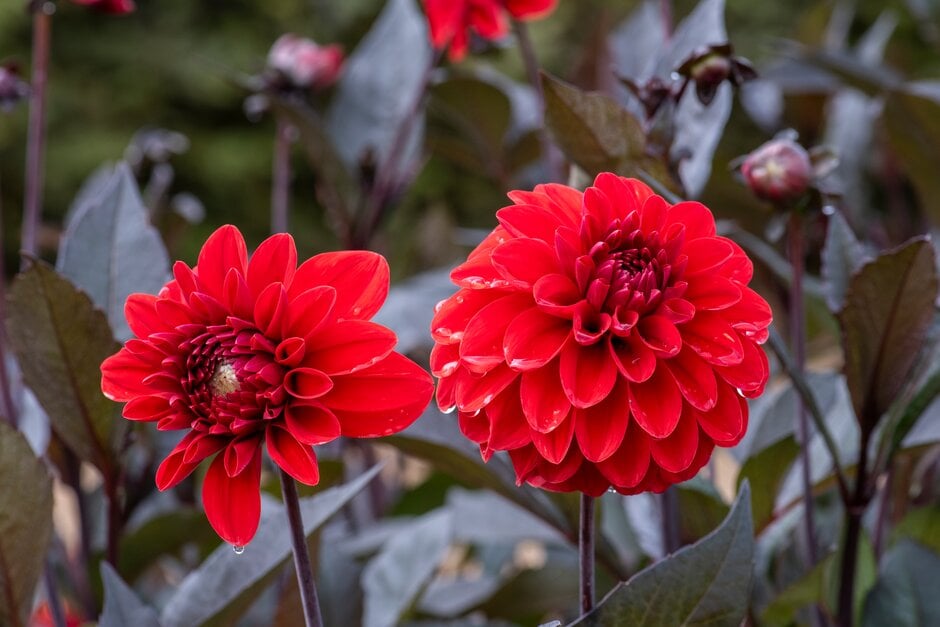Dahlia 'Fire Mountain' (D)
dahlia 'Fire Mountain'
A bushy, tuberous perennial to around 1m high, with serrated, dark bronze leaves. Vivid red, miniature decorative flowers to 8cm across, finely edged with yellow-orange on the centre petals, are produced from late summer to early autumn
Size
Ultimate height
0.5–1 metresTime to ultimate height
2–5 yearsUltimate spread
0.1–0.5 metresGrowing conditions
Moisture
Moist but well–drainedpH
Acid, Alkaline, NeutralColour & scent
| Stem | Flower | Foliage | Fruit | |
| Spring | Bronze Green | |||
|---|---|---|---|---|
| Summer | Red Orange | Bronze Green | ||
| Autumn | Red Orange | Bronze Green | ||
| Winter |
Position
- Full sun
Aspect
South–facing or West–facing
Exposure
Sheltered Hardiness
H3Botanical details
- Family
- Asteraceae
- Native to GB / Ireland
- No
- Foliage
- Deciduous
- Habit
- Clump forming
- Genus
Dahlia are tuberous rooted perennials with pinnately divided leaves and showy flowerheads, double in many cultivars, in summer and autumn
- Name status
Accepted
- Horticultural Group
- Decorative dahlias have fully double flowerheads with flat or slightly incurved florets
How to grow
Cultivation
Grow in fertile, humus-rich, well-drained soil, in full sun. Pinch out growing tips to encourage bushy plants. Plants will need support, see staking perennials. Water freely in dry periods. Lift and store tubers in autumn, particularly in heavy soils, or mulch well to protect from frosts. See dahlia cultivation for more advice
Propagation
Propagate by softwood cuttings, taken in spring from shoots from stored tubers, or by division, ensuring each tuber has at least one viable bud
Suggested planting locations and garden types
- City and courtyard gardens
- Cottage and informal garden
- Patio and container plants
- Bedding
- Cut flowers
- Flower borders and beds
Pruning
Deadhead to prolong flowering. Cut back to near ground level in the autumn
Pests
May be susceptible to aphids, capsid bugs, caterpillars, leaf miners, glasshouse red spider mite and slugs. Earwigs sometimes damage blooms
Diseases
May be susceptible to powdery mildews in dry conditions, and to grey moulds and other fungal rots in wet weather. Virus diseases may cause stunting, leaf markings and distortion. Fungal rots can also damage stored tubers
Get involved
The Royal Horticultural Society is the UK’s leading gardening charity. We aim to enrich everyone’s life through plants, and make the UK a greener and more beautiful place.

